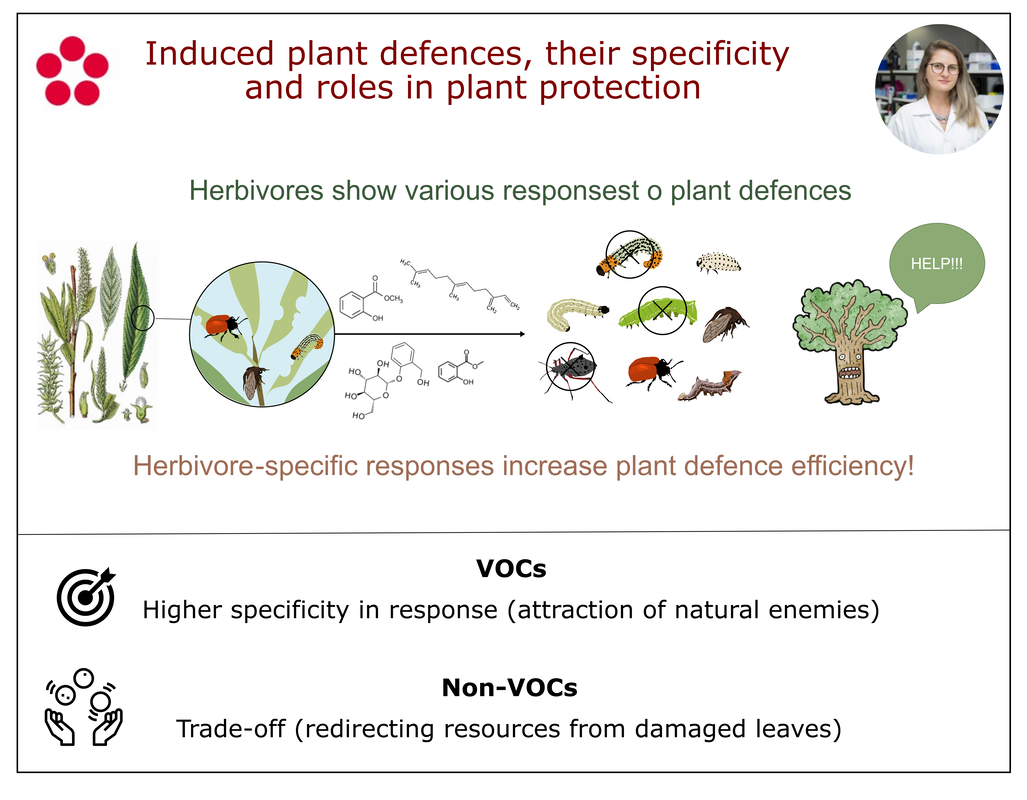|
Priscila Mezzomo, who is a PhD student in our team, won the prize for best student talk at a PhD student conference organized by the Department of Zoology, University of South Bohemia. The winning talk focused on the specificity in volatile signals emitted by plants attacked by different insect herbivores. Priscila´s results suggest that feeding by different insect herbivores elicit differential emissions of volatiles. Interestingly, different plant species seem to react to herbivores in a similar way, which can improve the communication between plants and natural enemies of the herbivores. Abstract
Induced plant defences, their specificity, and roles in plant protection Plants evolved many defences to cope with insect herbivores. As a response to plant defense strategies, herbivores can show differential responses. This fundamentally means that a defence acting against one herbivore can fail to affect another one. And because of that, deploying herbivore-specific responses can make plant defenses more efficient! However, to produce specific responses towards a given herbivore, plants must recognize that herbivore first. How is this possible? Insect feeding, for instance, is associated with different types of tissue damage (E.g., leaf-chewing, leaf-tyer, sap-sucking herbivores), but also with the deposition of oral secretions on plant tissues. Combined, this information leaves physical and chemical cues of herbivory, inducing unique defence responses in host plants. Herbivore-induced plant volatiles help predators and parasitoids to efficiently navigate towards their prey as they are generally better detectable than chemical cues released by herbivores themselves. Natural enemies can then help to suppress insect population, and as a result, reduce plant damage. In this sense, we investigate whether we can use herbivore traits such as their orders, feeding guilds or levels of dietary specialisation to predict the specificity in responses observed in plant chemistry. To do so, we expose Salix species to many species of herbivores, and measure volatile (GC-MS) and non-volatile (UHPLC-MS) leaf chemistry after herbivory. We discover that in the case of volatile defences, the level of herbivory damage caused by the insects is a strong driver of changes in the plant. But also, that the volatile composition changes regarding different herbivore orders, such as beetles and caterpillars, and among their species. Such specificity observed in volatiles could potentially inform specialized predators or parasitoids. In contrast, responses in non-volatile metabolites were far less specific. Most of the non-volatile metabolites were downregulated, possibly indicating that plants redirected their resources from leaves irrespective of herbivore identity causing the damage. Therefore, our results show that diverse responses to herbivores can contribute to the diversity of defensive strategies plants employ.
0 Comments
Leave a Reply. |
New PublicationsMarinček P., Léveillé-Bourret É. , Heiduk F., Leong J.V , Bailleul S.M., Volf M., . Wagner N.D. (2024) Challenge accepted: Evolutionary lineages versus taxonomic classification of North American shrub willows (Salix). the American Journal of Botany, https://doi.org/10.1002/ajb2.16361
Archives
June 2024
|
Proudly powered by Weebly


 RSS Feed
RSS Feed